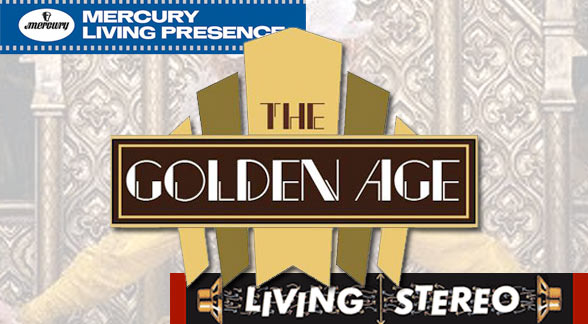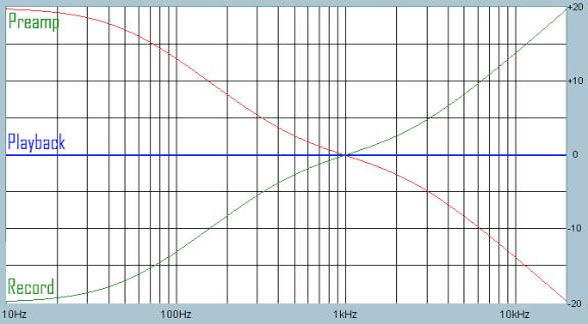The Golden Age Is Now!
Do you really think that the best performances and the best recordings of those performances happened 50 years ago during the so-called “Golden Age” of record making? Believers of this myth cite companies like RCA Living Stereo, Mercury Living Presence and Decca as prime examples of “state-of-the-art” labels/products that delivered superior recordings on vinyl LPs (and now transfers to SA-CD). And that their productions succeed in ways that current releases do not. This is complete nonsense! You may have to look a little harder for great recordings of terrific music making but the quality and fidelity of some of today’s recordings can be much better than releases from any of the previously mentioned labels.
Think about it. Recording engineers captured performances on early 2-channel (or even mono) analog tape machines capable of 55-60 dB of signal to noise ratio. These tapes were then cut to lacquer masters during the mastering process. This process involved substantial modifications to the natural recorded sound through the use of the RIAA equalization curve which “is a form of pre-emphasis on recording and de-emphasis on playback. A vinyl recording is made with the low frequencies reduced and the high frequencies boosted, and on playback the opposite occurs. The net result is a flat frequency response, but with attenuation of high frequency noise such as hiss and clicks that arise from the recording medium. Reducing the low frequencies also limits the excursions the cutter needs to make when cutting a groove. Groove width is thus reduced, allowing more grooves to fit into a given surface area, permitting longer recording times.” Finally, the stamper was used to replicate numerous analog copies using vinyl.
Figure 1 – A graph showing the record and playback EQ that is applied to all vinyl LPs.
The microphones and signal path that were used to produce these classics were very well developed. I still use mikes that were designed in the 60s and even some re-manufactured designs that precede the 50s. Microphone preamps have improved in the past 50 years and so has the rest of the signal path including amplifiers and speakers. But the most important changes have happened in the formats that are used to capture the sound delivered by the mikes. The move from analog tape as the master recording to HD PCM standard digital recording brings the potential for real world dynamics and extended frequency response to consumers for the first time. Analog tape just cannot approach the level of fidelity of HD PCM digital. There’s no more speed fluctuations, crosstalk, print through, excessive noise floor, tick and pops, modulation noise etc. Engineers and producers have the ability to record without mandated equalization curves and other compromises and can even choose to mix and deliver in 5.1 surround.
The experience of listening to the best that could be done in the 50s, 60s and 70s vs. listening to a state-of-the-art track made with current technologies isn’t even close. Is there musical value to projects from the “Golden Era”? Of course! One of my favorite album sets is the Columbia set of Stravinsky conducting Stravinsky. We’ll talk more about him tomorrow, as it is the 100th anniversary of the premier of “Le Sacre du Printemps”…”The Rite of Spring”.
The Golden Age of music recording is NOW! We engineers can reproduce music at a level that goes well beyond anything done previously. I received the following from a seasoned customer a while back:
This is the Holy Grail at last. You may like to know that I have been a pilgrim in what started off as the “hi-fi movement” since the early 1950s, starting out just as the old shellac “78” started to give way to microgroove vinyl. It is so satisfying to have survived to sample the audio and visual marvel of this Mozart performance, in virtual reality. And I would like you to know that I truly appreciate the hard work, which must have gone into achieving such a level of perfection, from all the AIX team involved.
Sincere thanks again for providing the “Holy Grail”, for this weary pilgrim! I do hope this disc will win plaudits for AIX Records. Best wishes for future successes!
Maurice Taggart



Mark,
sorry to dig up again this three weeks old blog post of yours for my comment; I could have made the same comment on a couple more of your posts, but I think it fits best here.
I do appreciate how you strive for perfection in your recordings, and I wholeheartedly agree that the technical possibilities that are available today for recording music are the best there have ever been. I do prefer a recording made in the digital domain with 96/24 (or more) over one that was made on analog tape and in that technical aspect I agree that the Golden Age is now.
However, there are a lot of great performances of great musicians out there which have been captured long ago and which just cannot be repeated for various reasons (not the least of which is that the artist might no longer be alive). I have bought the HDAD disc of Muddy Waters’ Folk Singer, which was recorded in 1964, I’ve bought a few 96/24 downloads of old Ella Fitzgerald and Louis Armstrong records, and even though all of the recordings I mentioned are only in mono, I think they are simply wonderful! They have captured unique performances by exceptional artists, and I am very thankful that I have access to those recordings and can listen to them in the quality they are in. Could you do a better recording today? I’m sure of it! Will I ever be able to hear Ella & Louis in a better quality? I doubt it! Sadly, we cannot travel back in time to do the recording all over again digitally and in 5.1.
If some really talented artists would record the same music again today, we might get a very good performance with a state-of-the-art recording. Would I stop listening to Ella & Louis or Muddy Waters and only listen to the modern recording from now on? Definitely not!
So from my point of view, the Golden Age of recording is now. But the Golden Age of performance is whenever an exceptional artist performs an exceptional piece of music in such a way that I want to listen to it over and over again! Some of them happened over 50 years ago, some maybe just last week…
Oliver, I couldn’t agree with you more. There are artists, ensembles and conductors that made recordings over the history of recorded sound that shine for musical reasons…I think Mississippi John Hurt, Stravinskky conducting the NBC Orchestra and Pablo Casals among lots of others.
However, there are really fabulous performers and performances that are happening now. I absolutely love my John Gorka recording as well as the one by Albert Lee..give them time and they make the grade in the opinion of history too.
But if I could time travel back to the “Golden Age” with my gear and recording style, I’m convinced that I could contribute the spectacular sound of HD-Audio and multichannel mixes to those great recordings!
You get no argument from me.